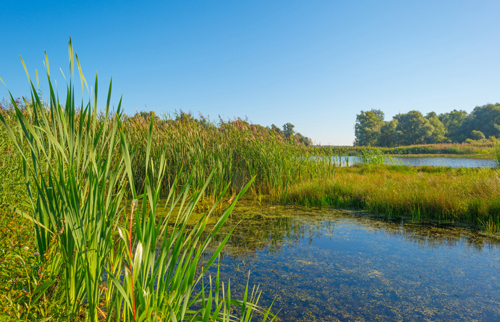Benefiting Communities and the Planet
This article was previously published in the winter issue of The Cultivator, Cornucopia’s quarterly newsletter.]
by Kestrel Burcham, JD
Farm and Food Policy Analyst at The Cornucopia Institute
 |
The benefits that a healthy, functioning environment provides for humanity are called ecosystem services. For example, forest ecosystems provide the service of oxygen production. These benefits are often taken for granted, although these services are finite in nature and tied directly to the vitality of the ecosystem itself.
In the early 2000s, the United Nations sponsored the Millennium Ecosystem Assessment (MA), an effort to understand the impact of human actions on ecosystems and human well-being. The assessment popularized the concept of ecosystem services, discussed in scientific and economic circles for decades prior.
The MA ultimately identified four major categories of ecosystem services: 1.Provisioning (production of food and water); 2.Regulating (controlling climate and disease); 3.Cultural (spiritual and recreational benefits); and, 4.Supporting Services (oxygen production and nutrient cycling).
Agriculture can seriously impact ecosystem services. Excessive tillage, draining of wetlands, voluminous irrigation, deforestation, monoculture, and nutrient overload from animal waste are all examples of damage to ecosystems. The slash and burn of rainforests destroys their biodiversity, along with their ability to sequester carbon (which helps buffer climate change) and produce oxygen. Draining wetlands to create agricultural land destroys their ability to purify water, slow down floodwaters, and prevent runoff.
As our understanding of the value of each ecosystem service deepens, many are being assigned economic worth. But in conventional agriculture, most of the costs to the environment are externalized. This means that the damage to functioning ecosystems—or the simple replacement of a healthy ecosystem with a dysfunctional one—is not represented economically.
Externalities help explain why conventional food can be sold to consumers at low prices. These ancillary costs are passed off, absorbed by other beings and into other devalued systems. In short, even if consumers pay cheaper prices at the checkout for conventional food, they pay dearly for the losses in ecosystem services.
Authentic organic food is more expensive to produce and buy, in part, because farmers do not externalize the environmental costs. Organic farmers who follow both the letter and the spirit of the law include their support for vibrant on-farm ecosystems among their operating costs.
Organic agriculture is mandated to support and maintain on-farm biodiversity and native ecosystems around the farm. Organic principles of soil-based production support nutrient cycling (which provides the service of carbon storage) and prevent harmful runoff (which supports freshwater environments). Some of these more sustainable practices can result in lower yields.
Cornucopia always recommends buying local organic food, but organic food from faraway farms still improves the overall health of the planet. Most authentic organic farms support biodiversity, pollinators, and the filtration of polluted air or water. Many maintain verdant rural landscape for recreational and cultural benefits.
Next time you grocery shop, factor in the costs of ecosystem services. You will realize what a bargain you are getting when you patronize true organic farms and the brands that support them.

